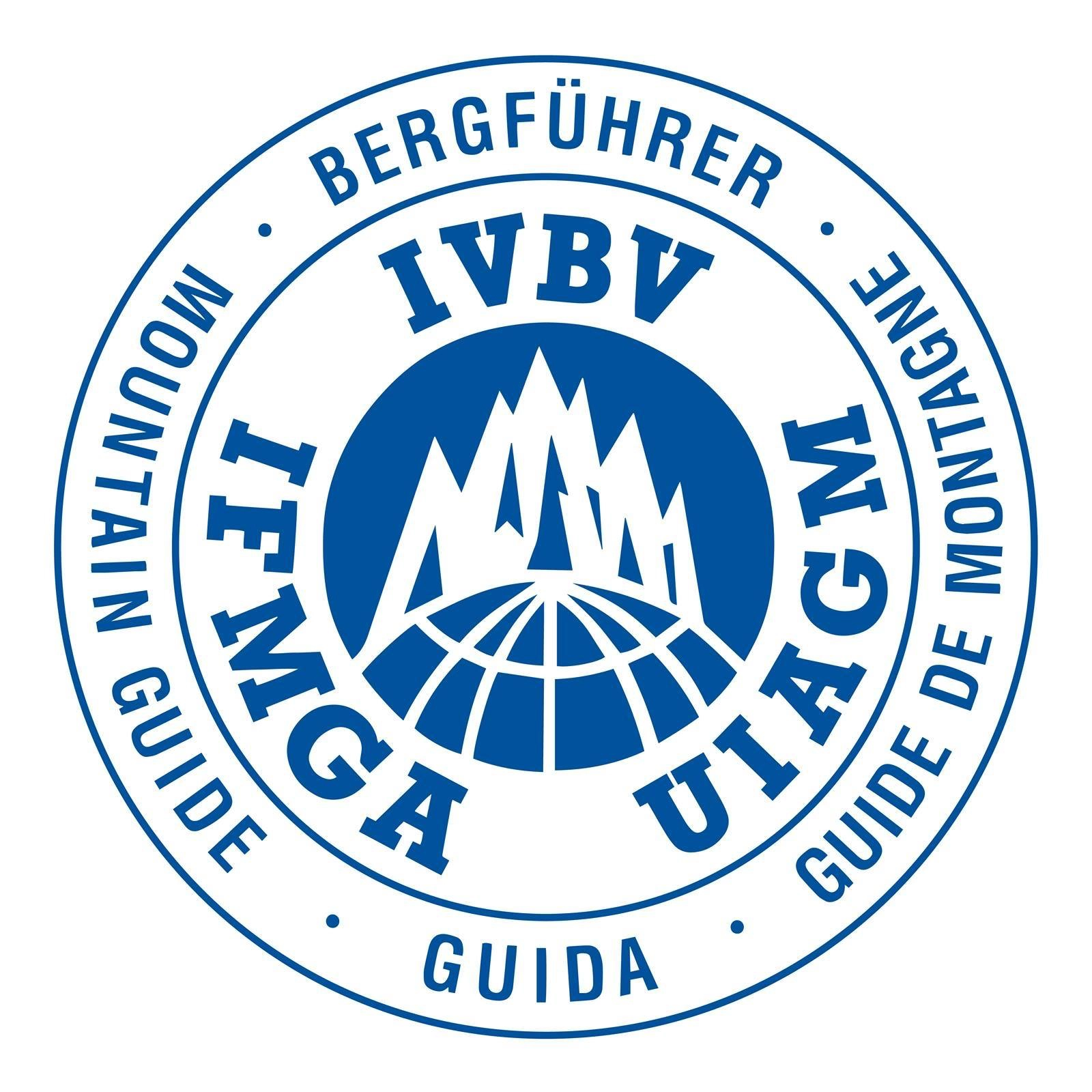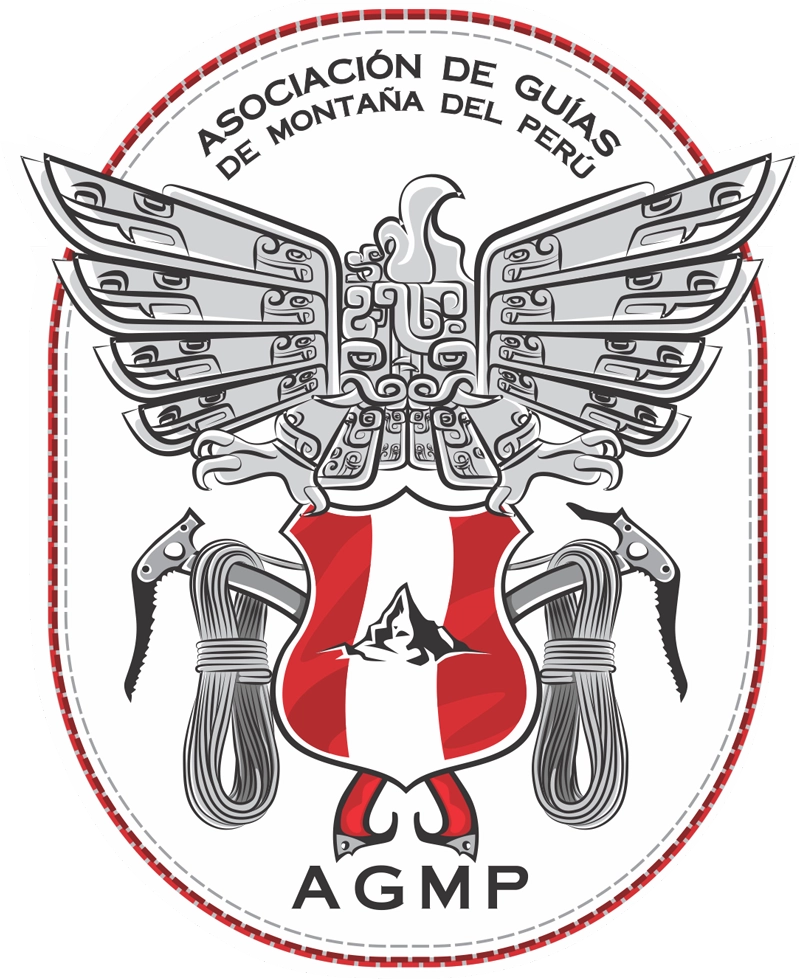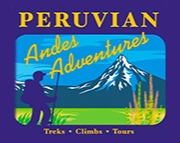The Cordillera Huayhuash is a compact, rugged range, situated 50kms and 5 to 6 hours by car to the south east of Huaraz.
With 7 peaks towering above 6000m and many more above 5500m, the Cordillera Huayhuash is one of the most spectacular mountain trekking & hiking circuits in the world and includes the second highest peak in Peru – Yerupajá Grande at 6634m (21765ft) and also Siula Grande – made famous by Joe Simpson in his book “Touching the Void” and in the subsequent film.
Every day on the treks hikers are treated to awesome close views of snow-capped peaks, glaciers and blue trout-filled lakes.
We offer a range of treks from a full circuit of 15 days down to a short trek to Laguna Jahuacocha of 4 days.
For the adventurous and fit hikers – check our full Cordillera Huayhuash Circuit 15 days which includes an alpine crossing of Cerro San Antonio and a visit to Siula Base Camp from “Touching the Void”
Or if you have less time or are no so “hard core” then you might enjoy our 8 day Huayhuash Mini Trek which has a more relaxing pace and takes you by the most beautiful passes and lakes in the Huayhuash


Treks
These are just some of the Cordillera Huayhuash Trek options. Our trek itineraries are completely flexible. We are very happy to discuss with you what you would like to do or see, the amount of time you have and can modify trek itineraries or “tailor make” a trek route to suit what you would like to do.
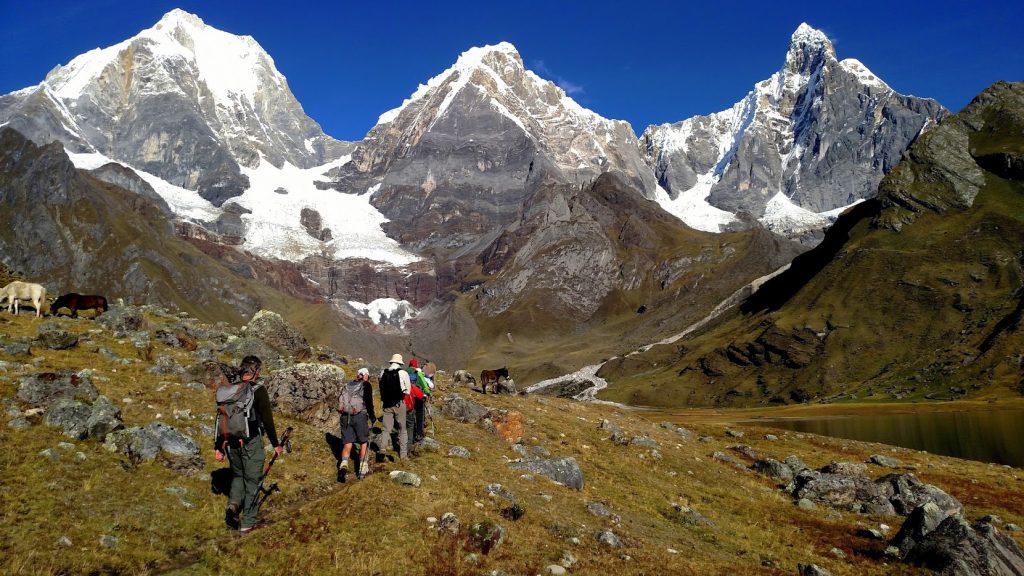
Full Circuit Huayhuash Treks
- 9 to 15 days
- Complete circuits of Huayhuash mountain range
- Choices for route variations – can include Siula Lakes, Cerro San Antonio, Siula Base Camp, Trapecio Pass and more!
- Multiple high pass crossings (up to 8 on some treks)
- Beautiful lakeside campsites
- Generally are physically harder treks

Huayhuash Short Treks
- 4 to 8 days
- Part circuits of most spectacular parts of the Huayhuash routes
- Less physically demanding options than the longer treks
- Relaxing hiking – with extra days at most spectacular lakeside camps
- Choice for Siula Lakes hike
- Great family hiking

Children Suitable Treks
- Suitable for families with children or those who may not be looking for a harder or a longer length trek
- Porter support and ponies to ride can be arranged for children
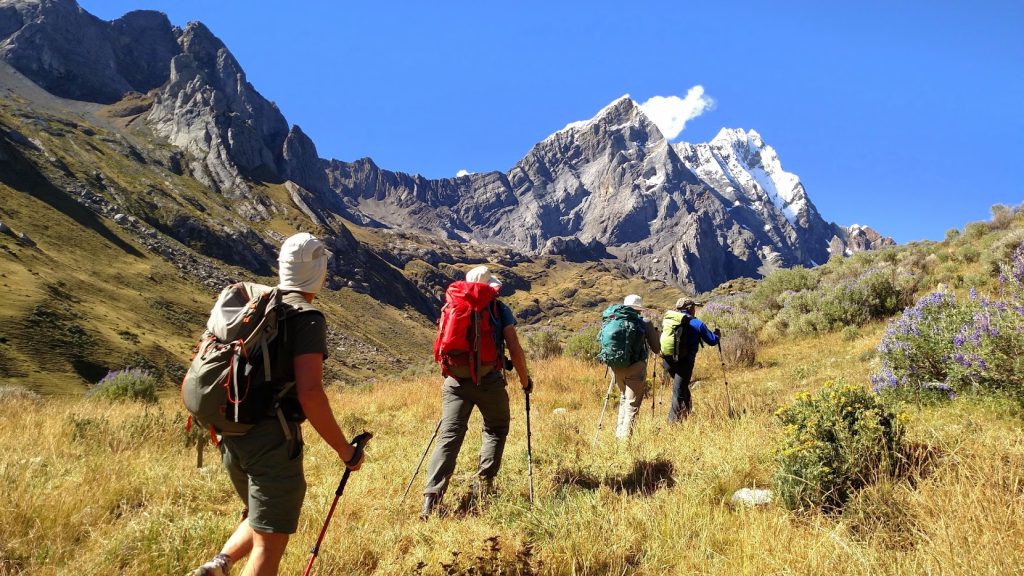
Other Cordillera Huayhuash Treks
- Include a snow climb of non-technical Diablo Mudo mountain
- Inti Raymi Sun Festival in July
- Also – ladies, active “seniors” groups, celebrating special occasions, photography treks, “Tailor Made” treks
General Cordillera Huayhuash
trek information
Cordillera Huayhuash Hiking – Private Land
All of the Cordillera Huayhuash trekking routes are on private land, with small local farming communities owning all the land we hike across and also all of the campsites. We are entitled to trek though the Huayhuash due to the goodwill of each local community and it is a privilege (not a right) that we are permitted to trek there. The communities have the right to refuse access to a particular location at any time or to impose conditions. We ask that all hikers respect the fact that we are trekking through privately owned land by respecting any conditions that the local communities may impose from time to time, respecting the environment and also the farmers animals and by leaving no rubbish on the trails.
Each local community charges an access fee which is collected at each campsite and is included in our trek prices. This fee is to compensate farmers for loss of grass for their animals from the many hundreds of horses and donkeys that pass through the region with trek groups each year and also to supplement their otherwise very low incomes. The community camping fees are included in the trek prices that we quote
Trek Grading & Fitness
Trek grading and walking times are average estimates only for people of average fitness and who are well acclimatised to the altitude. Some people will be much faster and others will find it more difficult and be much slower. Estimated times have been based on our experience with previous groups. Your own hiking speeds will depend on how well you have adjusted to the altitude as well as your own personal fitness level. The effects of altitude do make the hiking much harder than a similar trek closer to sea level would be and different people adjust to the altitude in a different timeframe.
You need to have good fitness and be able to hike a sustained (sometimes steep) uphill climb for up to 3 hours without distress and manage the long descents down from the passes to be able to enjoy most of these treks, and also be able to manage several nights sleeping in tents in sometimes very cold conditions.
All the Cordillera Huayhuash treks should be considered to be hard as you are several nights sleeping above 4000m / 13500ft in altitude and you go up high quickly after departing Huaraz, as well as the mountainous nature of the terrain. There are multiple high passes to cross, many over 4700m (15500ft) with some at a breath-taking 5000m (16400ft). 10 to 15 days continuous high altitude hiking with up to 3 hours climbing to the top of a pass most days can become tiring for the body. On our longer full circuit treks we have included one or two rest days where you have the option to take a day relaxing at the camp, enjoy great food or you can go for a day hike
The shorter 9 or 10 day treks starting from Quartelhuain can be very hard. You start from high altitude at Quartelhuain and the first day hiking climb to the top of a 4800m (15700ft) pass. There are no rest days which means 9 or 10 days continuous high altitude hiking with no breaks. These treks also include the crossing of the more difficult alpine / remote passes with longer days hiking
Our Huayhuash Mini Trek and Short Jahuacocha Trek are moderate to hard. They are less physically tough than full circuit treks as they have some shorter days and rest days for recovery included. You are also fewer nights sleeping at high altitude. However, the hiking is still physically demanding as you are always at high altitude and there are stiff hikes to the top of high passes to negotiate. You do need to have a good level of fitness and be able to hike up to 6 or 7 hours for a moderate Cordillera Huayhuash trek
Note:
Trails are often steep on these treks – both ascending and descending. Trails are not formed walking paths and can be uneven, slippery & rocky in places. It is a common comment from clients that they found the hiking to be harder than they were expecting.
This is usually due to the effects of altitude which invariably leaves people feeling less energetic than they would on similar hikes at lower altitudes. Also some people may not so accustomed to the rougher and uneven condition of the hiking trails. If you do not think you can enjoy this type of trekking, let us know and we can suggest some of the easier options
During treks we use donkeys to carry camping & cooking equipment, tents, food and your personal bag. You only carry a light day pack with camera, snacks, water bottle, warm jacket etc. Our guides and crew are very experienced and know how to manage trekking at altitude. We always walk slowly, take plenty of rest breaks and make sure that you have plenty of boiled water to drink.
See our Trek & Climb Services page for a full description of services that we offer.
Altitude and Acclimatisation:
Before departing for your Cordillera Huayhuash trek it is important to be well acclimatised to avoid possible altitude related illness.
Altitude symptoms vary but can include headache, nausea or vomiting, breathlessness, lack of appetite, stomach problems, extreme lethargy and lack of energy, inability to sleep – from mild to severe in extent. In extreme cases pulmonary or cerebral oedema are possible
We do highly recommend that you arrive in Huaraz at least 2 full days (3 nights) before the trek departs to help you become acclimatised to the altitude. It is advisable to have two full days in Huaraz to recover from your travel and do day hikes to higher altitude to help with acclimatisation before departing for the trek
We can advise on suitable acclimatisation hikes and either organise guided day hikes for you or you can choose to do your own unguided hikes and we can help with transport
See our Day Hikes in the Cordillera Blanca page for acclimatisation hike options
Trek Start – Llamac or Quartelhuain
Most of the Cordillera Huayhuash treks start from either Llamac or Quartelhuain
Llamac is a village where many of our donkey drivers live – at altitude 3300m / 10827ft and 4 to 5 hours drive from Huaraz. The first day of trek we camp in a small clearing on the outside of Llamac village
Quartelhuain is a further one hour drive beyond Llamac (6 hours from Huaraz) at altitude 4168m / 13675ft. The first night camp is in a pleasant grassy area away from the road
It is especially important to already be well acclimatised if you choose the option to start your trek from Quartelhuain (4168m / 13675ft) instead of at Llamac (3300m / 10827ft).
Starting the trek from Quartelhuain means that you drive direct from Huaraz (3070m) to 4168m at Quartelhuain, which is an altitude gain of 1100m / 3609ft in a single day with the altitude being gained quickly by driving (not hiking.) And the first day hiking you immediately make a hard climb after departing from camp to the top of a 4680m / 15354ft pass.
If you start your trek from Quartelhuain we highly recommend that you should have three full days (4 nights) in Huaraz to acclimatise.
We only recommend starting your trek from Quartelhuain if you are well acclimatised and also have good fitness levels. The first day actual hiking is hard with a long climb to the top of the first high pass.
Starting the trek at Llamac gives you a more gentle gain in altitude. On day 02 of the trek you hike from Llamac to Quartelhuain (not drive). The hike is a gentle increase in altitude during the day and is good for extra acclimatisation. The hike is along a dirt road, but it is not a busy road with very little traffic and it is a very scenic and relaxing hike.
Trek Roads:
Access to the Cordillera Huayhuash from Huaraz is via high mountain roads. In many places these roads are dirt roads (not paved) and can be bumpy in places. Travel time per km by road is longer than you expect
Best Time to Go:
May to September are considered to be the months with more settled weather and better chance to have nice hiking weather.
June, July & August are generally the dryer months in the Peruvian Andes but are also the busiest trekking months. May and September are “shoulder” months with some good trekking weather still possible and usually fewer other trekkers on the trails.
May is at the end of the rainy season and spring conditions with spring rain showers still possible, the weather is often improving with often clear skies, everything is fresh and green following the rains and there are lots of small alpine flowers in the Huayhuash. September is at the end of the “dry” season and approaching the start of the rainy season, there can still be periods of good weather for trekking and it can be more relaxing with fewer large groups around.
Cordillera Huayhuash
vs. Cordillera Blanca
We are often asked what the difference between the two regions is or which is better for trekking in.
Both areas are very spectacular but different and it is impossible to compare them. Both have amazing snow-capped mountains and glaciers that you hike by very close to & both have continuous breath taking hikes up to high passes with incredible views on most days of the treks.
The Cordillera Huayhuash
The Huayhuash is generally vast open countryside with wide valleys and expansive open grasslands. There is less diversity of plants and trees that we find in the Cordillera Blanca, although you still do find pretty wild flowers in most places and there are scattered areas of high altitude quenual trees. There are more big lakes in the Huayhuash than in the Blanca & many of them contain trout. Many of the campsites are by a lake. There are fewer local people living around the trek circuit than you may find on some Cordillera Blanca routes, just some small farms and a few homes scattered around the lakes. The only villages are Llamac at the start of the trek (where our donkey drivers live) and a couple of other villages close to the trek circuit.
Travel time to the Huayhuash is greater with minimum 5 hours journey to the start of the trek then back to Huaraz after the trek finishes. Generally in Cordillera Huayhuash treks the first day of the trek program is driving from Huaraz to the start point of the trek and camping there the night, with hiking starting the next morning.
The Cordillera Blanca
In the Cordillera Blanca the valleys tend to be more steep sided and narrower than in the Huayhuash – often with massive glacial carved granite rock walls lining the valleys. Each valley you cross into has a unique microclimate with a different look, often different plants & flowers. Some areas are forested with low forest and other areas are more open valleys with grasslands. There is more diversity of plants, flowers and trees in the Cordillera Blanca than the Huayhuash. More local people live around the Cordillera Blanca and there are more villages and small farms on the areas bordering the National Park. You will meet more local people on some Blanca treks than in the Huayhuash. Apart from some of the more remote trek options – there generally can be closer road access to the trek circuits in the Cordillera Blanca than in the Huayhuash which can make it easier to organise departure from the trek route if necessary. Driving time between Huaraz and most Cordillera Blanca treks is less than in the Huayhuash, and you are therefore able to start hiking on the first day of the trek program after driving to the trek start point in the morning.
For information & your questions about a Cordillera Huayhuash Trekking Adventure

